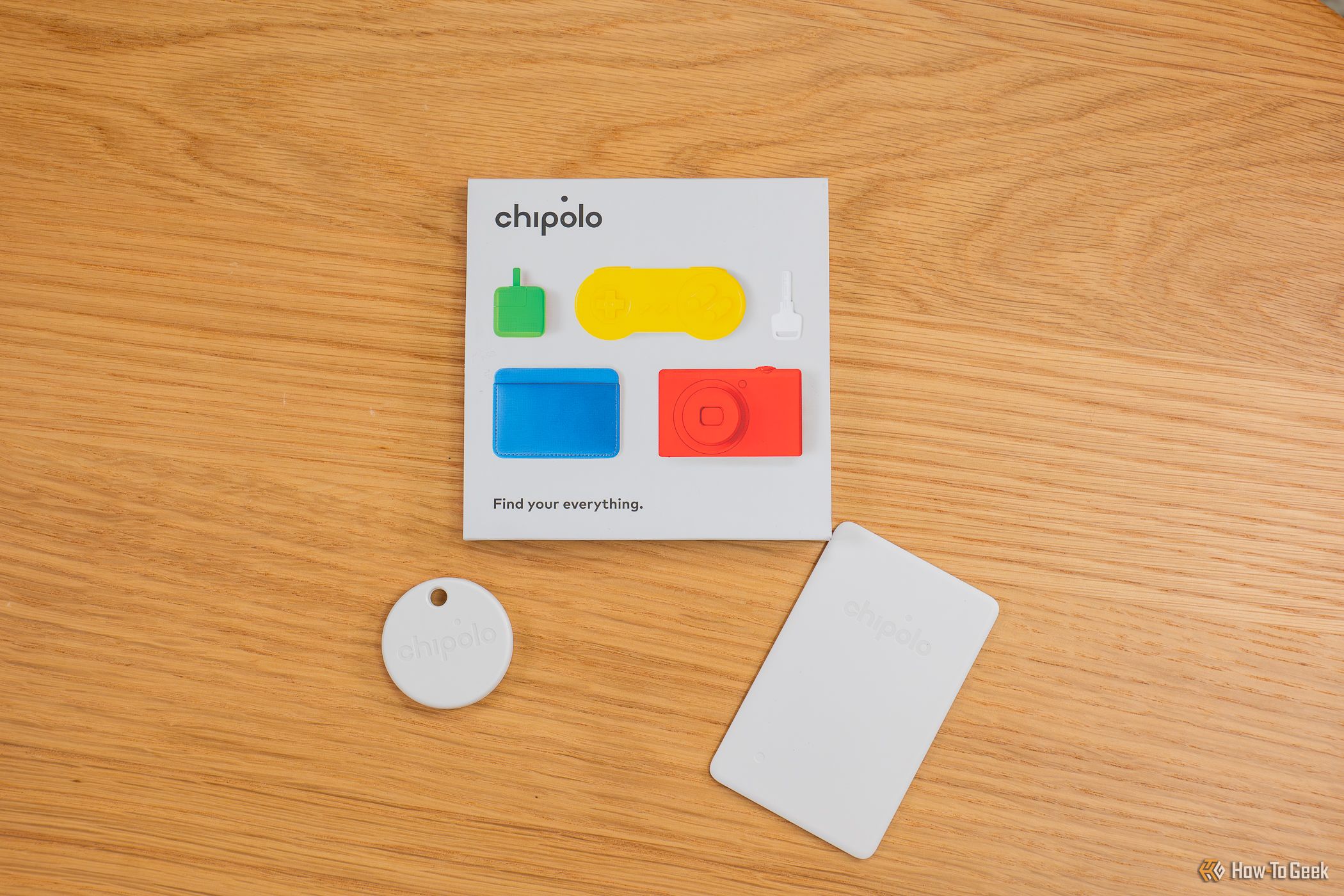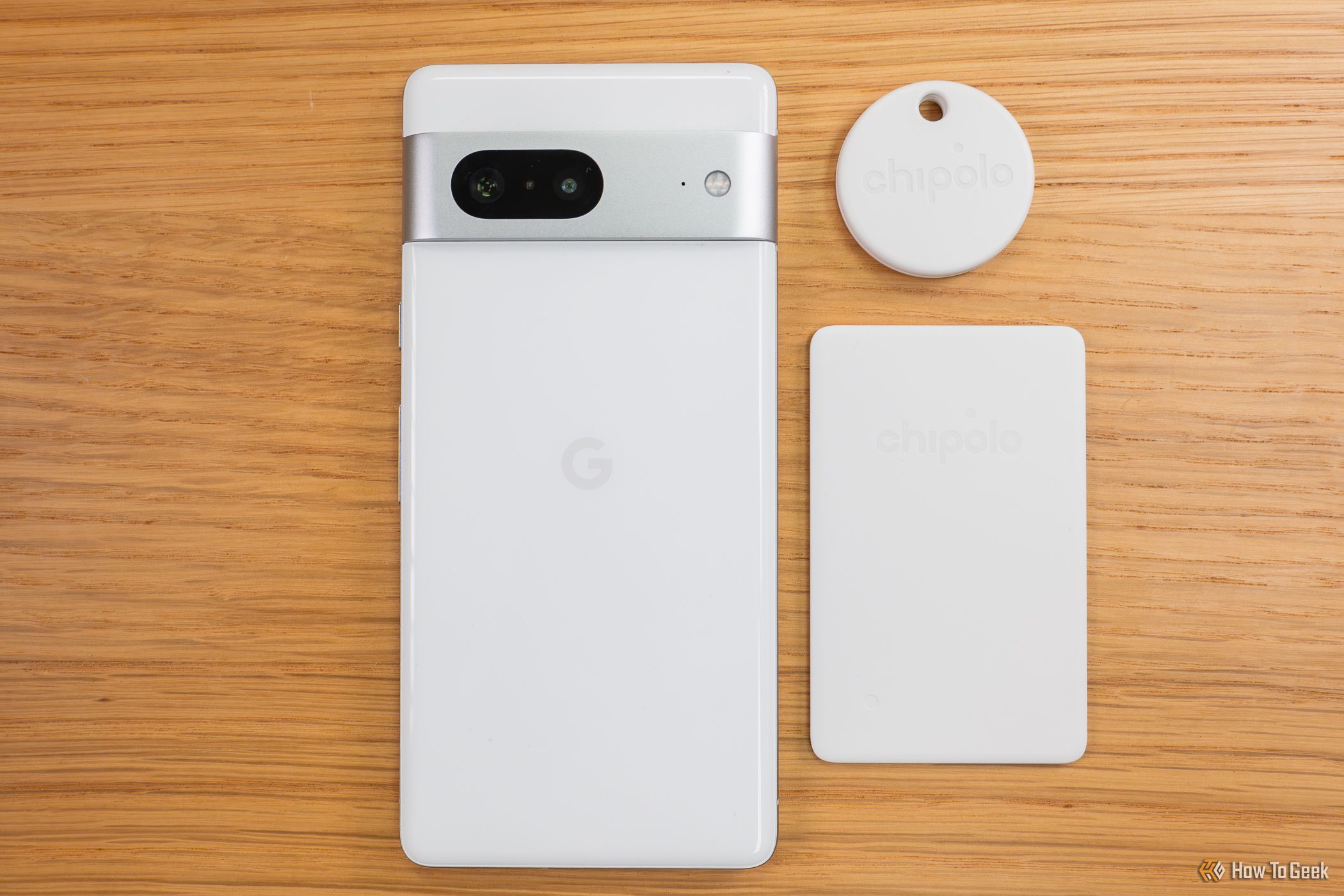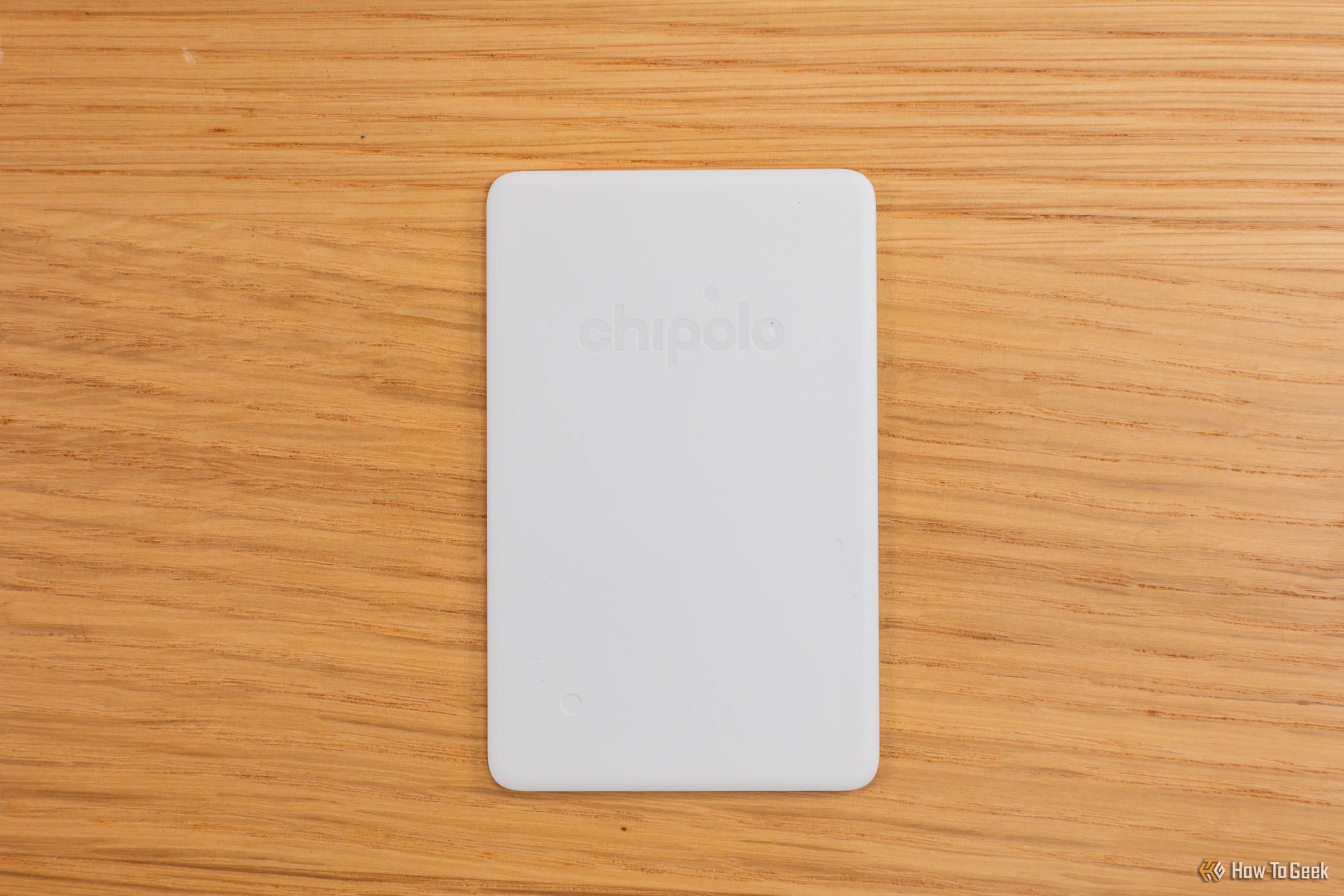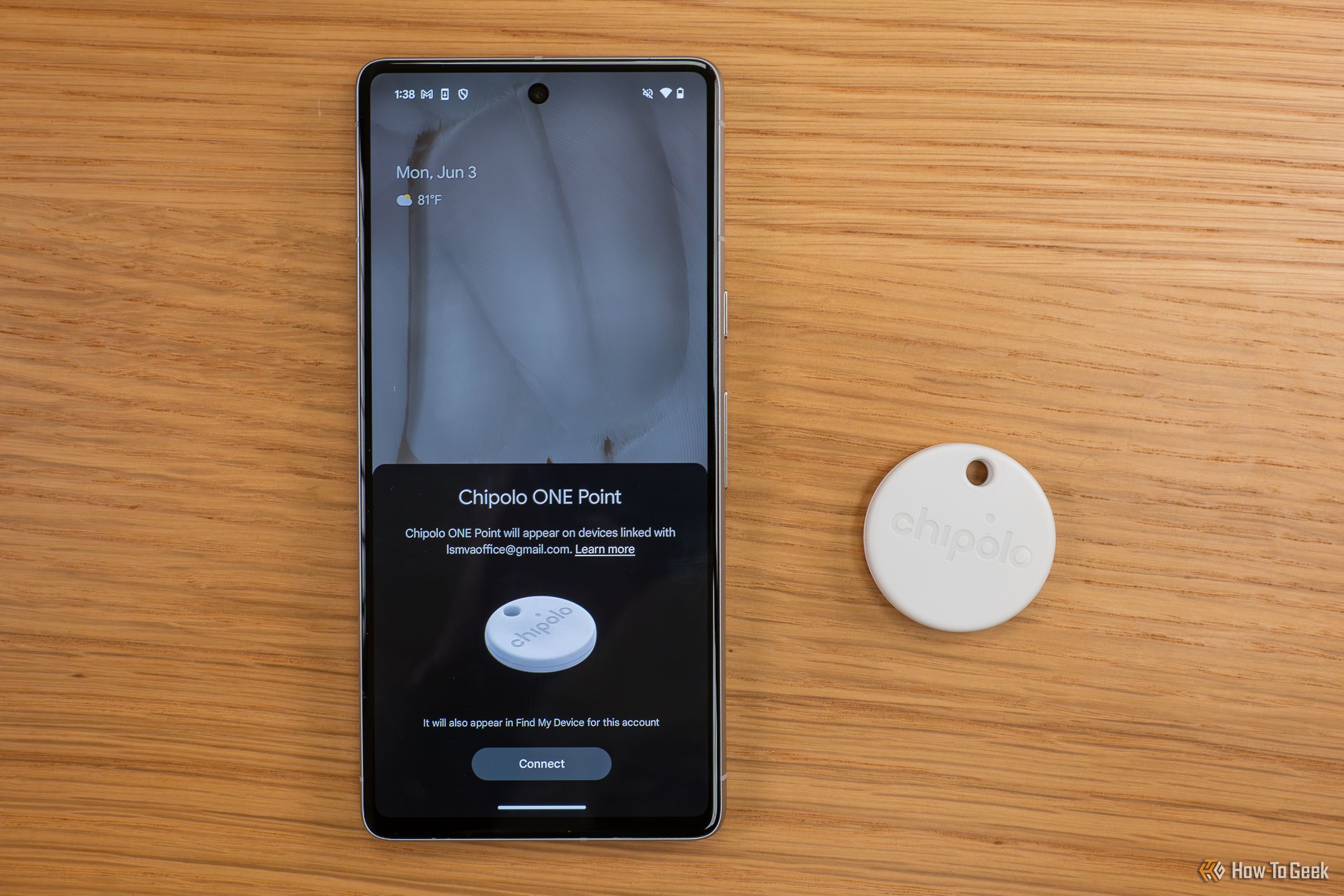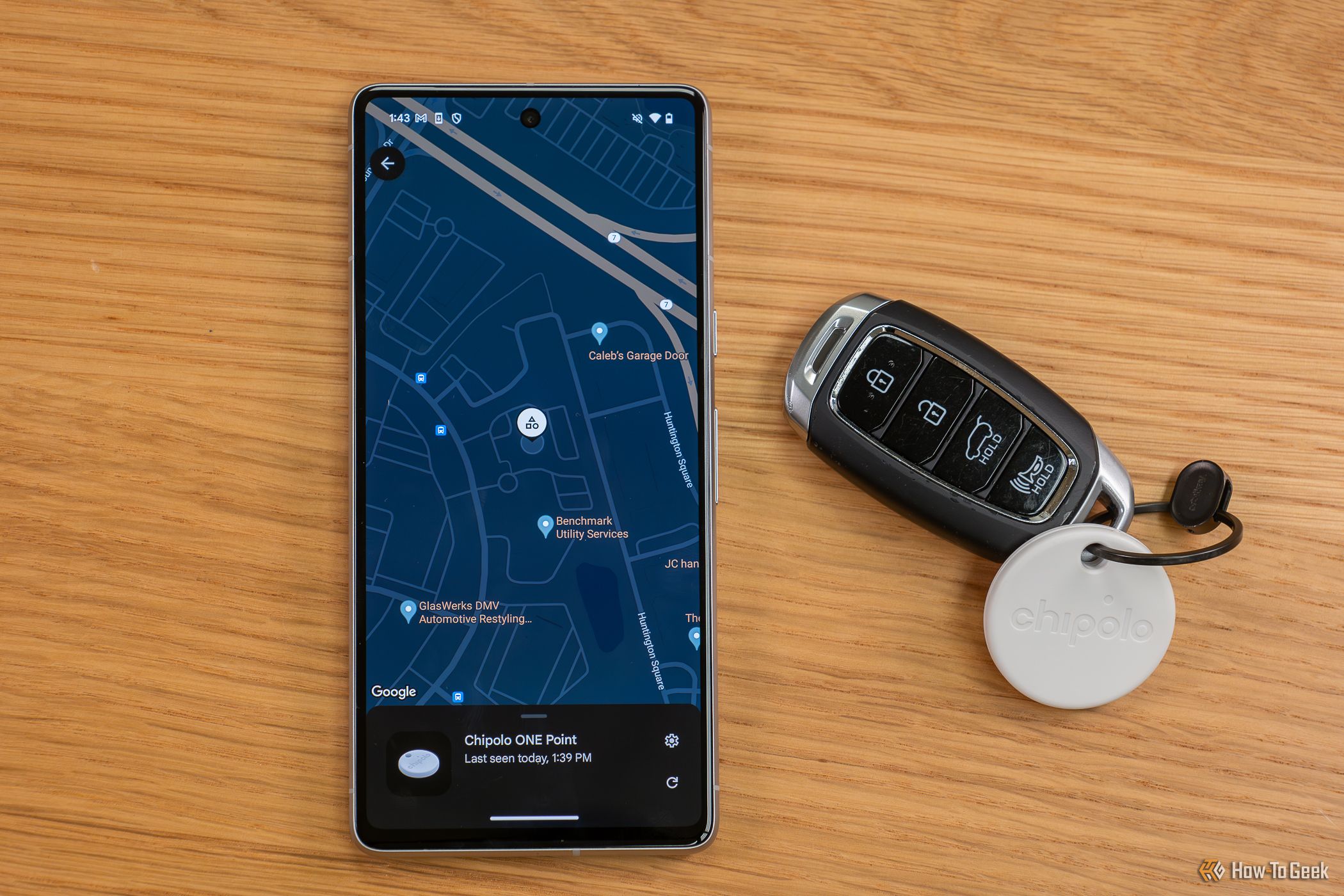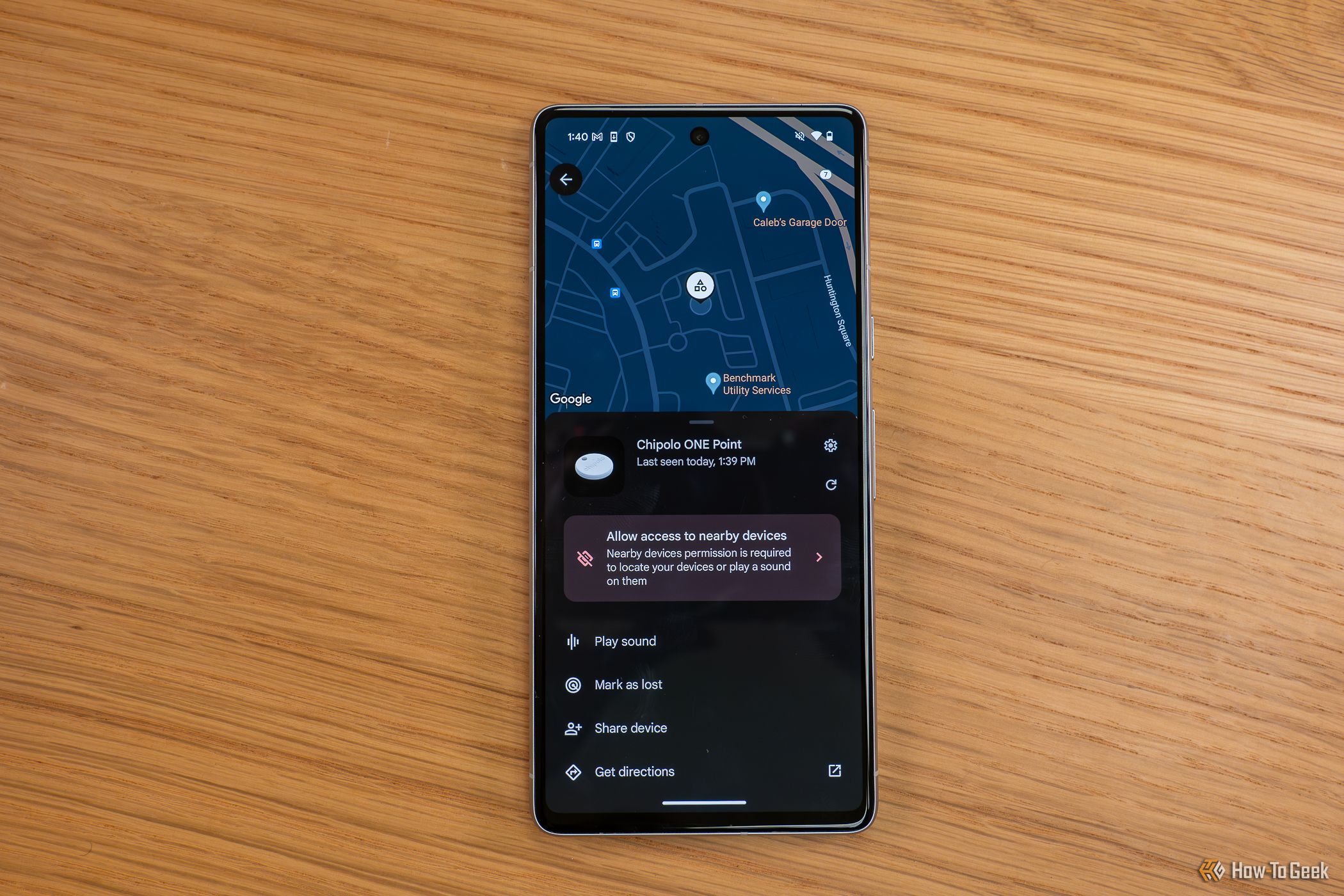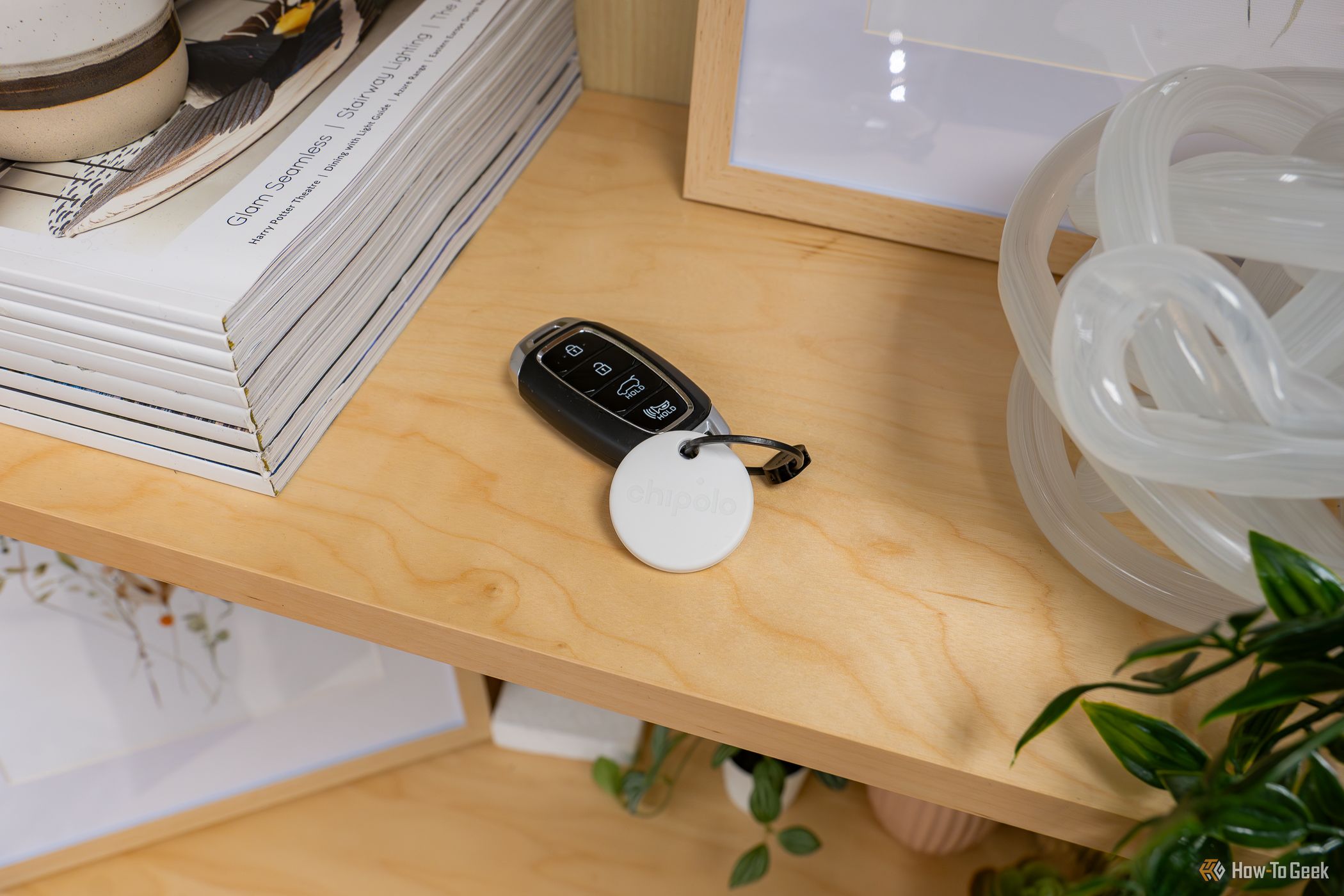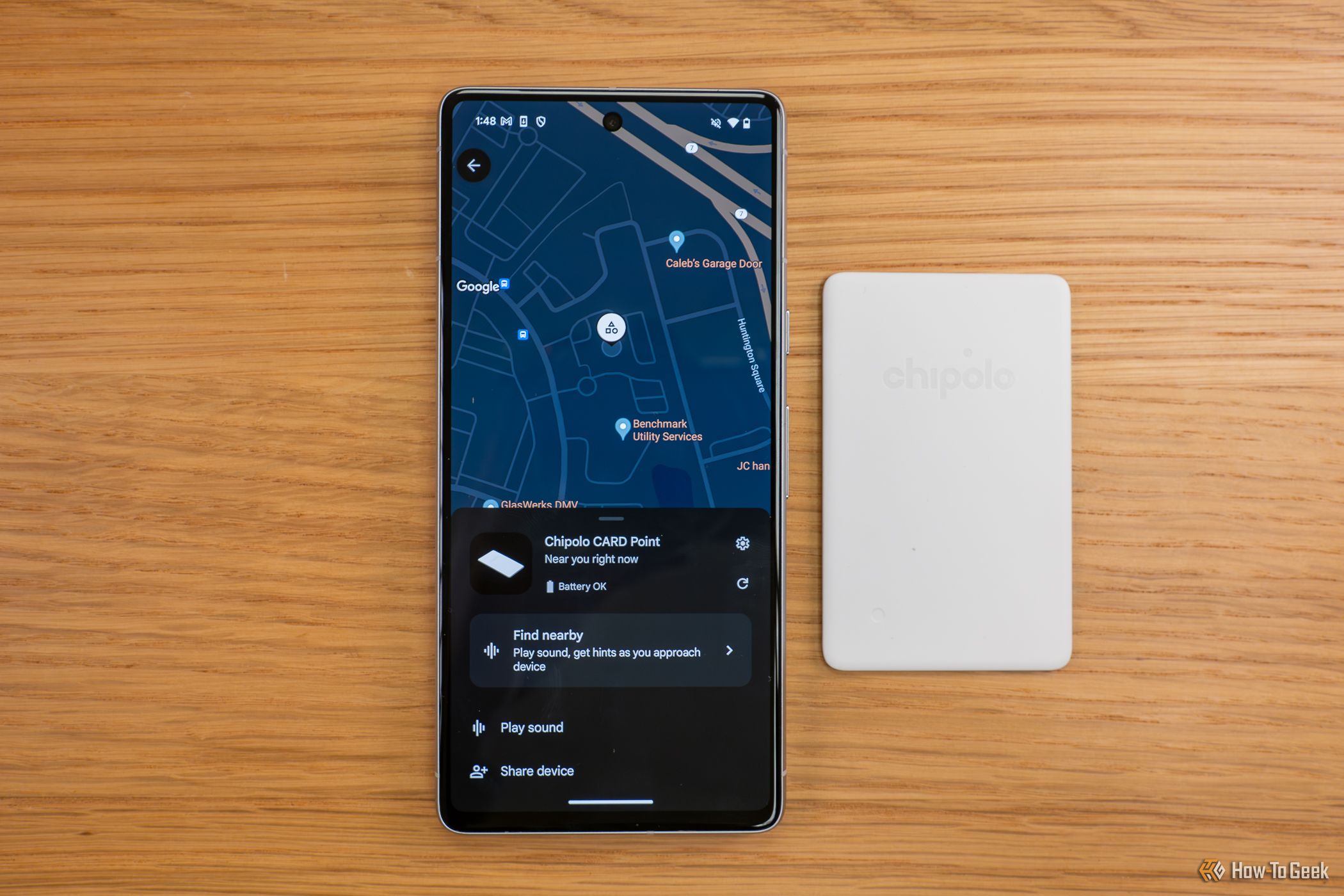Key Takeaways
- Chipolo One Point is an Android alternative to Apple’s AirTag.
- The tracker works with Google’s Find My Device app, offering features like location mapping and sound playback.
- Competitors like Pebblebee offer longer Bluetooth range, better water resistance, and USB-C charging, making them potential alternatives.
For three years, iPhone owners have had exclusive access to an affordable, simple tracker that “just works”—no third-party apps required. Finally, Android owners have an answer to the AirTag in the Chipolo One Point. In fact, they have multiple options, with the also new Card Point. The question is, are they any good?
Google has long built-in a service aptly named “Find My Device” to every Android phone, tablet, and smartwatch for tracking those devices. However, Google recently added AirTag-like Bluetooth trackers, and it’s using Android devices as a network to help locate these trackers when they’re out of range. The Chipolo One Point and Card Point are two of the very first trackers available on the Find My Device Network.
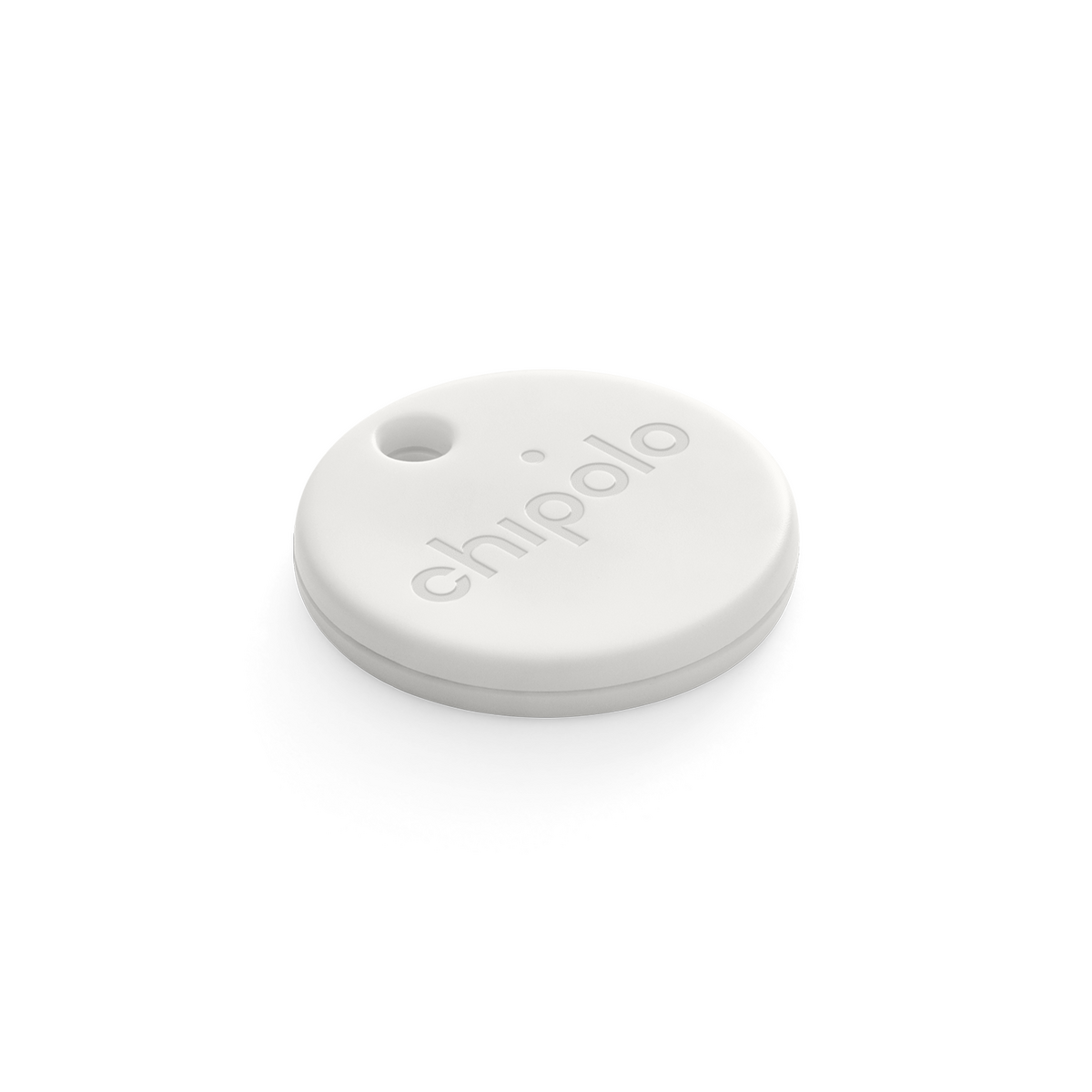
Chipolo One Point
Never lose your keys again with the Chipolo One Point, a powerful key finder that works seamlessly with Google’s Find My Device app.
- Discreet, small size with a keychain hole
- Speaker has plenty of volume
- Quick and easy setup process
- Replaceable battery
- Not rechargeable
- Only IPX5 water resistance
- Bluetooth range could be better
Price and Availability
The Chipolo One Point and Chipolo Card Point are available for pre-order with shipping scheduled for the “end of July.” The One Point costs $28 for one or $79 for a four-pack. The Card Point is $35 for one, $60 for two, or $112 for four.
Also, a note on branding. Chipolo has three product lines of One and Card trackers. The “Point” line is specifically for Google’s Find My Device app, while the “Spot” line works with Apple’s Find My app. Don’t get the wrong one.
Design: A Blank Slate
The Chipolo One Point is a compact and practical tracker designed to help you keep track of your belongings. Its design is simple, featuring a small, circular shape in unassuming off-white that easily fits onto your keychain or bag. Personally, I think that’s one of the standout features—the built-in keyring hole. Unlike an AirTag, you don’t need any additional accessories just to attach it to something.
The device is made from durable plastic, ensuring it can withstand the bumps and bruises of being attached to items in your daily life. It’s also water-resistant (IPX5), so you don’t have to worry about it getting damaged in the rain. Despite its small size, it boasts a speaker with plenty of volume, making it easy to locate your items when they go missing.
The Chipolo Card Point, on the other hand, is designed specifically for wallets and other slim items. It’s about as thin as two credit cards (2.4mm), making it perfect for slipping into your wallet without adding much bulk. The Card Point is also made from durable plastic and has the same IPX5 water resistance rating so that it can handle splashes and spills without any issues.
One of the key features of the Card Point is its loud sound, which is not quite as loud as the One Point, but it still helps you find your wallet quickly when it’s nearby. The Card Point is also only available in an off-white color, but the minimalist design allows it to fit into your wallet without drawing attention. And both the One and Card are perfect canvases for stickers and other personalization.
One drawback of the design is the battery situation. The One Point has a replaceable CR 2032 battery that is rated to last “up to one year.” The Card Point, however, lasts up to two years, but the battery is not replaceable. You’ll need to send it back to Chipolo for their “Recycle & Renew” program when it eventually dies.
Setup: Quick and Painless
Typically, if you wanted to use a Chipolo tracker with your Android phone, it would be set up through the company’s companion app. Indeed, that’s what I was expecting. However, the entire process with a device that works with Google’s Find My Device network is handled with the Find My Device app.
I’m happy to say that the process went seamlessly without a hitch. All I had to do was press the Chipolo tracker and hold it next to my phone. A pop-up appeared on the screen, and I simply tapped “Connect.” From that point forward, I could access the tracker through the Find My Device app (but not the Find My Device website).
This is one of those times when not having much to say is a very good thing. The Chipolo One Point just worked when it came to pairing. Actually using the device for tracking was not as clear cut.
Tracking: Some Growing Pains
To be clear, the Chipolo One Point and Card Point feature the same tracking features and abilities. You can see their location on a map, make them play a sound, mark them as lost, get directions to their location, and get help pinpointing the precise location when you’re nearby.
Let’s talk about the “Find Nearby” functionality first. This option appears when you’re within Bluetooth range (about 200 feet), and it uses abstract shapes and colors to guide you to the device in a game of “hot and cold.” I found that this is not an exact science. It’s a far cry from devices with ultra-wideband (UWB) radios, like AirTags, which can very accurately point you in the direction you need to go.
If you have Google Home and Nest devices in your home, the Find My Device app will also use them to help you locate the tracker. For example, it might say, “Last seen near Living Room speaker just now,” and that gives you a quick general idea of where in your house you need to look. Pretty cool.
What wasn’t as cool was Google’s Find My Device network during my testing. The whole idea behind the Find My Device network is it leverages Android devices everywhere to help you locate trackers that are out of range. However, this is still being rolled out, and while Google automatically opts devices in, the default setting may not be aggressive enough to be useful. Google admitted as much in late June:
We are actively working to roll out enhancements to how the Find My Device network operates that will improve the speed and ability of locating lost items over the coming weeks. Devices are continuing to join the new Find My Device network, and we expect the network to grow, which will also help improve lost device findability. We encourage Bluetooth tag owners to change their Find My Device network setting to “With network in all areas” to help improve the network’s ability to find their lost items in lower-traffic areas.
The default setting is called “With network in high-traffic areas only,” which is a complicated way of saying your Android phone will only be used for the Find My Device network if you’re in an area with many other devices. So, if your tracker is lost in the middle of nowhere, it may take a long time for it to be located. You would need multiple Android users with that default setting to be nearby or one person who manually changed it to “With network in all areas.” Not ideal.
Of course, this is all still very new. The Find My Device network was only activated in April 2024, and these things take time to roll out.
Competition: Better Options Out There
Google’s Find My Device network for trackers is still very new, but there’s already a nice crop of options available for Android users. The Chipolo One Point is joined by trackers from Pebblebee, and later this summer, we’ll have trackers from Eufy and Motorola as well. Since these trackers all work with the Find My Device app, they offer very similar functionality.
The differentiation of these devices comes down to things like size, shape, Bluetooth range, water resistance, alert volume, and battery life. The Pebblebee Clip, for example, is a direct competitor with the One Point. It has a larger Bluetooth range (500 feet), slightly better water resistance (IPX6), and it’s rechargeable with USB-C. All for $1 more than the One Point.
Should You Buy the Chipolo One Point?
That leads us to the question of whether or not the Chipolo One Point (or Card Point) should be the defacto “AirTag for Android” or not. Many of the problems I had were the fault of Google’s immature Find My Device network, but when comparing the Chipolo devices to the competition, there are some clear downsides.
All three of Pebblebee’s trackers should offer a longer Bluetooth range, better water resistance, and USB-C charging. So when the One Point dies after 12 months, you’ll need to buy an uncommon battery. Whereas when the Pebblebee Clip dies after 12 months, you can just pop it on a charger.
As mentioned, the good news here is most of the problems with the Chipolo trackers should eventually be ironed out by Google and a wider adoption of the Find My Device network. Based on hardware alone, the One Point is a fine device, but there are some advantages to similarly priced competitors. The choice is yours.

Chipolo One Point
Never lose your keys again with the Chipolo One Point, a powerful key finder that works seamlessly with Google’s Find My Device app.


